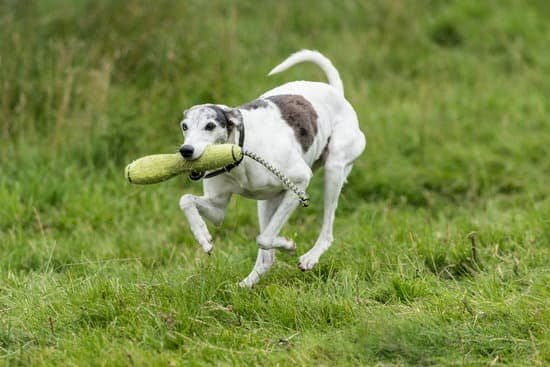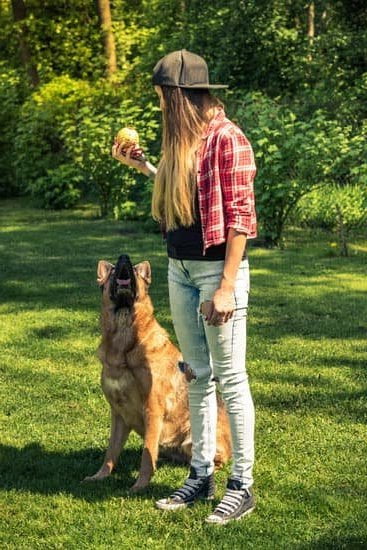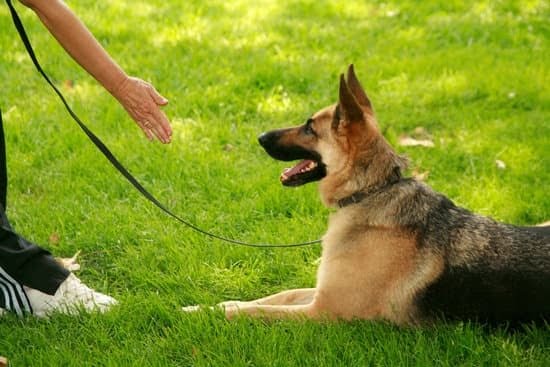Introduction
Training your dog to stop begging is important for a number of reasons, not least of which is the fact that begging can be irritating and disruptive. Even well-behaved dogs may beg out of instinct or simply because they have been rewarded in the past. If you allow your pet to continue this behavior, it will become increasingly demanding, and can even lead to behavioral problems such as anxiety and aggression.
Furthermore, feeding a dog from the table sets unnecessary boundaries between humans and animals, suggesting that they are not equal members of the family. Finally, overfeeding can cause obesity in pets, which leads to all kinds of serious health problems including joint pain due to excess body weight.
All in all, ignoring your pup’s begging behaviour is often not enough; training them to break this habit is essential for their wellbeing as well as yours.
Identifying Potential Causes of the Dog’s Begging
Before you can effectively train your dog to stop begging, it is essential that you identify the root cause of the problem. There are many potential causes of begging, including boredom, fear, or nutritional deficiencies in the dog’s diet. With every case of begging, it is important to assess the situation from a behavioral and medical standpoint.
For example, a lack of adequate exercise and stimulation could be contributing to your pup’s behaviors. Increasing physical activities such as leash walks and interactive playtime may help reduce the overall frequency of their undesirable behavior. Keeping the dog distracted with puzzles and chew toys can also promote mental well-being. Making sure that there are appropriate outlets for energy will make teaching them proper manners much easier in the long run.
Additionally, it is crucial that you meet all of your dog’s basic nutritional needs with a balanced diet. If your pup’s begging behavior persists even after changes have been made to their lifestyle or routine, then considering consulting with a veterinarian to ensure that their nutrition needs are being met correctly. This can often be done by conducting blood tests or performing an analysis on their fur or skin samples taken during an examination. As always, if you are ever concerned about your pet’s health or wellbeing, it is best to err on the side of caution and reach out to a professional for assistance.
Understanding Appropriate Training Techniques to Discourage Begging
With any training technique it is important to start early. Puppies, being like children, will naturally look for attention and with the incorrect reinforcement at a young age can develop an undesirable habit of begging. Developing consistency and rules around meal or treat times is essential as dogs need these to be trained effectively.
For example, when introducing a pup to food, establish when and where it eats and do not allow it to beg during the period of instruction. Dogs should understand when they are being taught – so set a routine which repeats this every time food is introduced: sit/stand/await your command, eat after the owner gives permission by uttering the phrase (e.g., ‘okay’). And lastly, ideally no table scraps or treats are given at any other time than designated meal times.
In addition to establishing eating habits, many people attempt to use verbal criticism or scolding to try and reduce a dog’s begging behaviour which generally does not solve the problem because it relies solely on punishment or inconsistent reinforcement. This can actually make things worse in some cases as it may encourage an increase in screaming or yelping from the puppy seeking out more attention from its owner. Instead, positive reinforcement such as praising the pup when they obey their commands should be used in place of punishing language. Training treats can also be offered as a reward for abiding by instructions which helps build confidence in puppies whilst serving as ease of practice for owners when attempting to instil new behaviours upon their four-legged partner.
Encouraging positive behaviour while discouraging negative behaviour through various methods of consistent repetition approaches will help any canine companion understand how they should behave in different situations – thus aiding them in becoming perfectly obedient companions!
Setting Clear Boundaries and Restricting Access to Certain Areas
If you want to effectively train your dog to stop begging, it’s important to set clear boundaries. This means that you need to decide on what areas of the house and yard your dog will be allowed in and then stick to those set rules. Be consistent, as your dog may test boundaries early on during their training. If a room is off limits, ensure that nobody ever feeds or pet’s your dog while they are inside. Adhering to these rules will signal to your pet that their begging won’t be rewarded. You can also reinforce positive behavior by creating a special area away from the living space designed just for them. This spot should have any special toys or treats they enjoy, plus comfortable bedding. Whenever you see your pup beg, firmly tell them “no” and redirect them to this area with something of theirs that they can enjoy instead of food scraps or human attention.
Establishing Consistent Routines and Positive Reinforcement Tactics
One of the most effective and humane ways to train a dog to stop begging is by establishing consistent routines and implementing positive reinforcement tactics. Establishing both physical and virtual boundaries, such as not feeding your dog from the table or counter, is important for setting up expectations. This should be done consistently each time to ensure your message is clear. In order to keep your dog from begging, it is essential to use positive reinforcement such as verbal praise or treats when they abide by any rules set in place. This helps to reinforce that their behavior is wanted as it will increase the likelihood of them wanting to please you again in the future. Additionally, avoiding rewards that perpetuate bad behavior like giving attention or any type of food when your dog begs will help depreciate this undesirable trait over time. Consistency during this process is key realizing that it may take a while for them to understand the desired behavior within the household.
Countering Begging During Mealtimes with Treats or Distractions
The best way to train a dog to stop begging is by implementing a feeding routine. Before feeding your dog, make sure that the area is free from distraction. If your dog begins to beg during mealtimes, redirect their attention with treats or a distraction of some kind. Give your pup something else to focus on, such as a toy or cognitive puzzle game, instead of letting them pay attention to food and people around them. This will help reinforce that mealtime is not associated with begging and it will encourage more desirable behavior in the future. Additionally, you can give your pup breaks in between meals. By offering treats or distractions during these moments, you can create positive associations around food and training. During the breaks, you can practice commands like sit and stay- which will help reinforce good habits and pave the way for successful training sessions in the future!
Utilizing the Avoidance Method as Part of the Training Process
The avoidance method is one of the most effective techniques used when training a dog to stop begging. With this method, the goal is to increase the likelihood of your dog getting negative reinforcement each time they beg. By consistently limiting access to food until the desired behavior has been achieved, and occasionally providing tasty treats after staying quiet, your pup will soon learn that good behavior and patience is rewarded.
In order to use this particular approach as part of your training process, you should start by making simple requests from your furry friend each time they look longingly at their dinner bowl (Sit, Come, Down or whatever other command you deem fit for the situation). If they comply and stay put until further instructed—allow them to eat their meal. However, if your pooch persists in begging after being given instruction— denial of their treat should follow. Additionally, using a command such as “go away” accompanied by pointing in another direction provides clear instructions that no matter how hard they try—begging won’t bring them what they desire. Furthermore, be sure to reward your pup with a tiny morsel every now and then when they demonstrate good listening skills and remain in place as requested. Doing this helps keeps them motivated and enhances training success.
Addressing Common Challenges for Older Dogs during Training
When attempting to train an older dog to stop begging, there are some common challenges that need to be prepared for and addressed. First, if the dog has had a life-long experience of being “rewarded” with table scraps, it is important to ensure that all family members are on board with the new training rules. Having inconsistent responses in the home can confuse the pet and make the training process more difficult. Additionally, it is important to create a safe place away from dining spaces so that they do not see temptation as people eat. For example a crate or chair in another room could serve as a reminder for them that this behavior is off limits during meal time. Furthermore, additional reinforcement such as treats for being quiet or walking away from tables may help reinforce expected behaviors. Maintaining consistency across family members and providing positive alternatives will aid in successful dog training and extinguish any nuisance begging habits from your pet.
Incorporating Exercise and Play into the Training Program
In order to successfully train your dog to stop begging, it is important to incorporate exercise and play into their training program. Exercise helps dogs concentrate on tasks better, expends energy stores, and can reinforce the desired behaviors that you want your pet to learn. Setting aside time for structured play with your pup will also help form a bond between you two as well as give them something to look forward too while they are learning not to beg. Play creates an environment of fun and reward that can help keep your pup’s motivation high and make them more receptive to training. Exercise might include activities such as playing fetch or going for walks. Meanwhile, some examples of play activities could be interactive toys designed for dogs, tug-of-war games with a rope toy, hide-and-seek using their favorite treats or squeaky toys. No matter which activities you choose just remember that consistency is key when it comes to training and making sure these are implemented regularly will have lasting effects on your pup’s behavior in the long run.
Conclusion
Training a dog to stop begging is an incredibly useful skill for any canine companion. Teaching your dog not to beg can prevent them from developing unhealthy eating habits, reduce the stress of mealtime situations, and keep them from trying to play with guests or other animals during dinner. By setting clear boundaries on when and what kind of behaviors are acceptable at mealtime, you will be able to establish a better relationship with your pet in no time. Not only that, but by teaching your pup to ignore food distractions and stay calm during meals, you can ensure that yours is a home where everyone feels comfortable – no matter what it smells like! Ultimately, training a dog to stop begging is all about creating good habits and understanding the positive impacts they can have down the road. Make sure to set aside regular time devoted just to teaching this behavior so that it can become second nature eventually – both for you and your pup!

Welcome to the blog! I am a professional dog trainer and have been working with dogs for many years. In this blog, I will be discussing various topics related to dog training, including tips, tricks, and advice. I hope you find this information helpful and informative. Thanks for reading!





